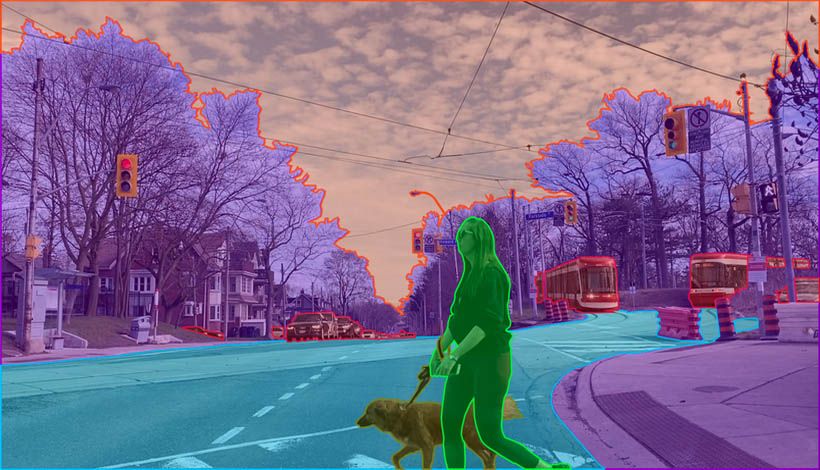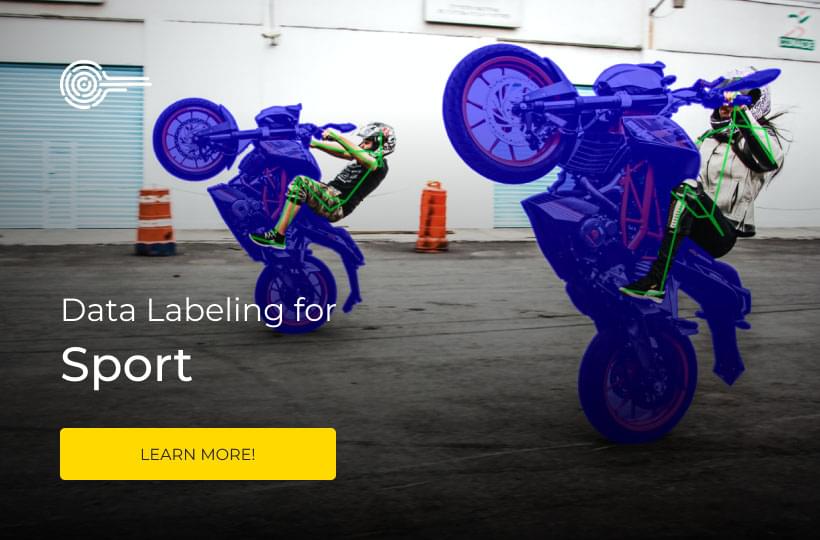Instance vs. Semantic Segmentation: What Are the Key Differences?

Computer vision applications are endless. The field of computer vision implementation is from self-driving vehicles to robust facial recognition software. Computer vision is one of the hottest subfields of AI at the moment. But human vision has proven itself as a uniquely challenging gift to bestow on machines.
As living creatures, making sense of the world around us comes naturally. For computers, vision requires sophisticated deep learning algorithms. But algorithms don’t rely on magic — they need to be fed immense amounts of high-quality data. That’s where 2D and 3D semantic segmentation comes into play.
Computer vision has the potential to revolutionize diverse industries. But it all begins with the process of identifying and classifying objects—otherwise known as image segmentation. Let’s dive into what this looks like and how. When performed well, this process produces high-quality, reliable training datasets for machine learning models.

Instance vs. Semantic Segmentation in Image Processing
The objective of any computer vision models is to develop an algorithm of image detection. But that’s not enough — type of image annotation must give high level accuracy. Otherwise, autonomous vehicles and unmanned drones would pose a danger to the public.
Environment analysis relies on video and image segmentation in image processing. In a nutshell, segmentation uses a “divide and conquer” strategy to process visual input.
Two types of image segmentation exist:
- Semantic segmentation. Objects shown in an image are grouped based on defined categories. For instance, a street scene would be segmented by “pedestrians,” “bikes,” “vehicles,” “sidewalks,” and so on.

- Instance segmentation. Consider instance segmentation a refined version of semantic segmentation. Categories like “vehicles” are split into “cars,” “motorcycles,” “buses,” and so on — instance segmentation detects the instances of each category.

In other words, semantic segmentation treats multiple objects within a single category as one entity. Instance segmentation, on the other hand, identifies individual objects within these categories.
To achieve the highest degree of accuracy, computer vision teams must build a dataset for instance segmentation.
Semantic Segmentation for Deep Learning
Image processing techniques have come a long way. Before the era of deep learning, image processing relied on gray level segmentation. This type wasn’t robust enough to represent complex classes (e.g., “pedestrians”). The application of conditional random fields (CRFs), a class of statistical modeling methods, allowed for structured prediction, paving the way for other methods.
Deep learning leads to the use of fully convolutional networks (FCNs), U-Nets, the Tiramisu Model. There can be and other sophisticated solutions that have produced results with unprecedented resolution in real time.
Methods for semantic segmentation are constantly improving. But how is the technique useful for target object beyond the lab?
Semantic Segmentation in Action: Real-World Applications
Here’s how semantic segmentation makes an impact across industries:
- Self-driving cars. Semantic segmentation identifies pedestrians, other vehicles, lanes, and other objects of interest, allowing autonomous vehicles to stay safe.
- Medical scans. Tumors, abscesses, and other MRI abnormalities are detected and outlined using the technique of semantic segmentation.
- Satellite imagery. Semantic segmentation maps the world from above, outlining bodies of water, roads, crop fields — even free parking spaces.
- Clothing. Fashion retailers use segmentation to recommend similar items of clothing and swap outfits digitally.
Professional Annotation Services by Keymakr
Keymakr specializes in image annotation projects and video annotation. Our team is made up of machine learning experts. We understand what your processing projects need to perform at their best. We have the expertise, experience, and advanced image annotation tools to get the job done based on your budget and deadlines.
Does your computer vision project require highly customized data labeled? Our data scientists will search the web and contact individual data vendors ourselves. In many cases projects on image processing need specific data. We have an in-house production team at our disposal.
Different projects can require millions of images of busy roads or video footage of warehouses. We can collect, create, and annotate the data you need at the pixel-perfect standard you want.
Are you interested in high-quality training datasets for your next machine learning image processing? Get in touch with a member of our team today to book your free demo.




